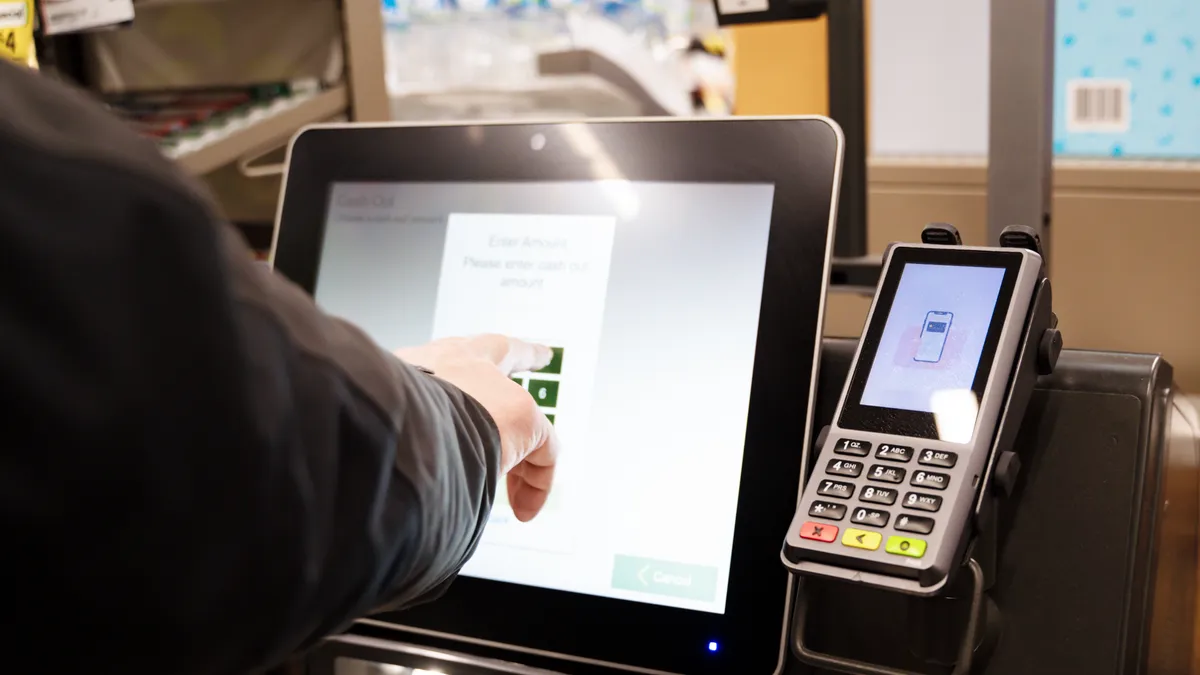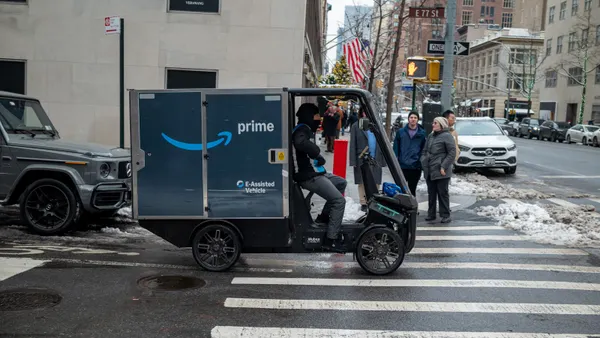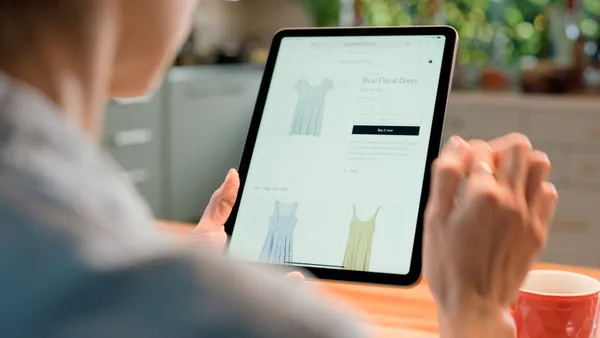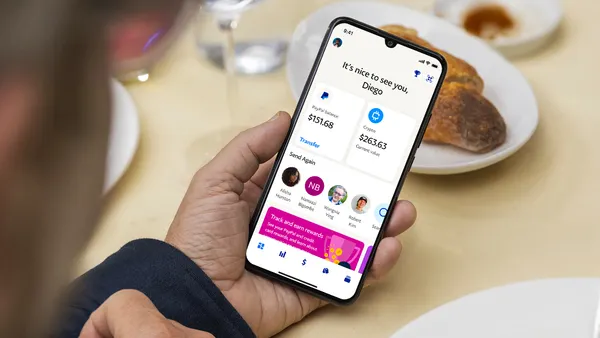Strategically mounted just above the self-checkout stations in a Harris Teeter supermarket location in Gaithersburg, Maryland, a fleet of smart video cameras is bent on ensuring that shoppers don’t leave the store without paying for every product they have in their cart.
The devices are programmed to alert customers if they neglect to scan an item, giving them the chance to correct the error and continue processing their order, according to green signs positioned alongside the terminals. Should the shopper miss a second item, the unit will halt the checkout process and summon an employee, the signs indicate.
Harris Teeter has installed the technology in an unspecified number of stores, a Harris Teeter spokesperson said in a statement. The spokesperson did not identify the supplier of the equipment, indicate why the Kroger-owned supermarket chain opted to install the cameras or provide details about how the retailer’s “Self-Checkout Video Assistance” program works.
The system resembles anti-theft equipment Kroger agreed to procure from Irish artificial intelligence firm Everseen in September 2020 in a bid to reduce shrink at self-checkout stations. Kroger indicated at the time that it intended to introduce the gear at up to 2,500 stores.
Doug Baker, vice president of industry relations at FMI - The Food Industry Association, noted that while retailers have access to a wealth of technology that can automatically spot efforts by shoppers to outsmart self-checkout systems, confronting a shopper suspected of trying to steal something can be risky because the person could respond violently.
“A lot of retailers right now are of the opinion that it's hands-off,” Baker said. “If they're going to steal, let them steal. Your safety's more important. So it just depends on their strategy for the use of the tool.”

How often does theft occur at self-checkout?
Self-checkout terminals have quickly spread across the grocery industry, with one retail consultant estimate noting they now handle the majority of transactions in stores.
But the do-it-yourself setup that relies on shoppers to scan bar codes and punch in product quantities is also ripe for theft. Some reports have noted the difficulties retailers face in balancing the convenience and demand for self-checkout with the need to keep shrink levels down.
Many retailers dedicate staff members to their self-checkout areas, while others, like Harris Teeter, are using cameras and other high-tech equipment to keep shoppers in line. Costco recently stepped up its efforts to check membership cards at its self-checkout terminals in order to prevent people from sharing their cards with non-members.
Retail crime intelligence and loss prevention platform Auror collected self-checkout theft data based on 2.5 million events across 10,000 grocery store locations, not including specialty, big box or department retailers, throughout North America last year. Bobby Haskins, the company’s vice president of retail partnerships in North America, said the research found that 39% of all thefts within grocery stores occur at self-checkout.
The firm’s research also found that, while the average dollar amount attached to self-checkout theft incidents ($120) is significant, it is less than half the amount of incidents not linked to self-checkout ($250).
Ten percent of individuals, who Haskins referred to as opportunists, make up well over half (62%) of self-checkout theft loss, indicating that organized retail crime boosters are not the leading culprits of self-checkout theft, Haskins said.
He added that, once these individuals know they can take advantage of self-checkout terminals, they will revisit the store dozens of times over, each time swiping items.
Self-checkout theft will likely continue to climb, and retailer’s attempts to stymie those efforts will evolve, Haskins said. Not only do more advanced technology and security systems at self-checkout kiosks deter and detect theft, but they also allow grocery companies to collect data on repeat offenders and catch theft patterns, he said.












